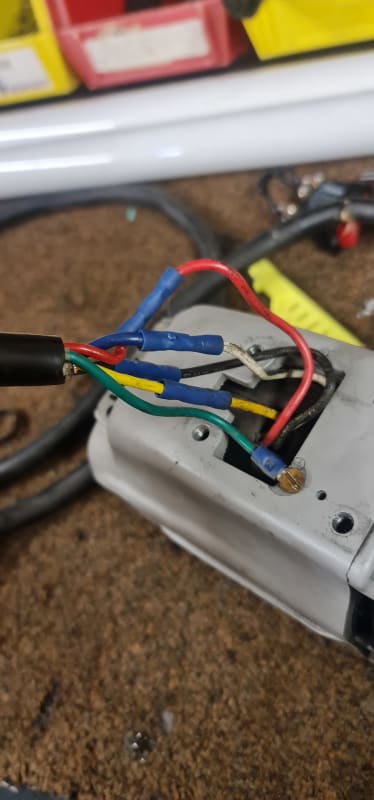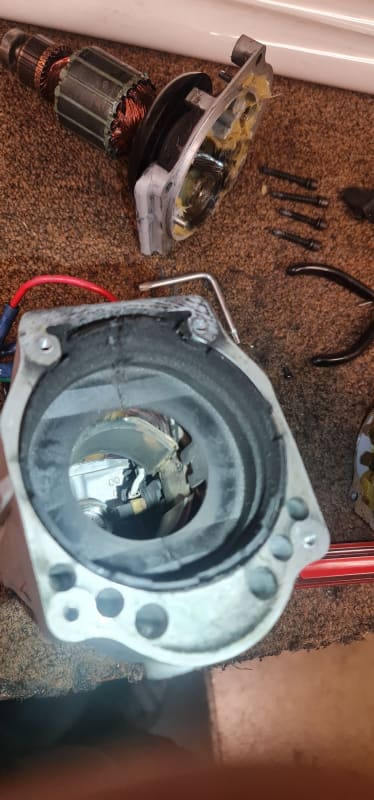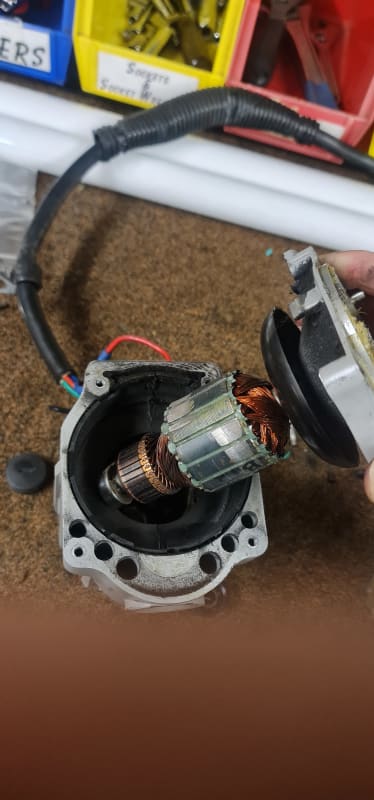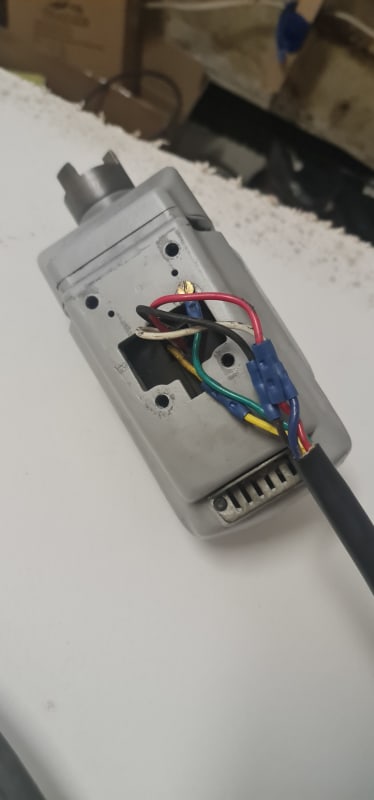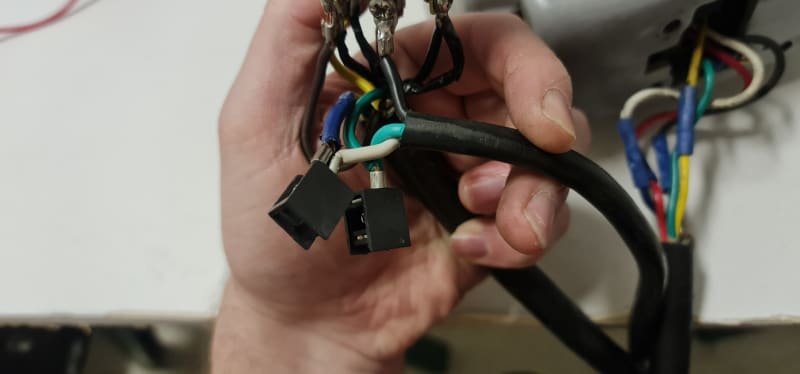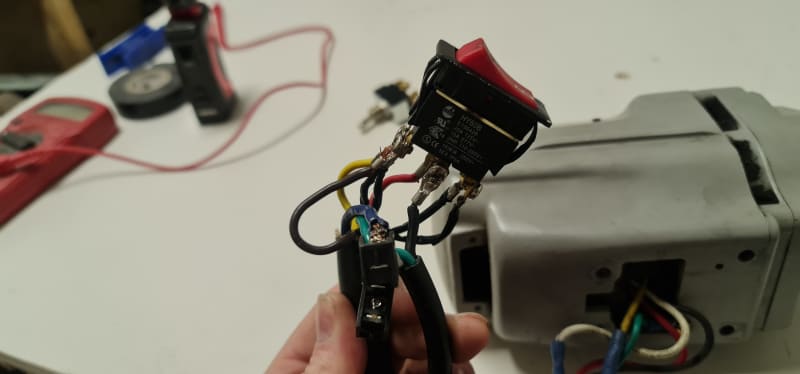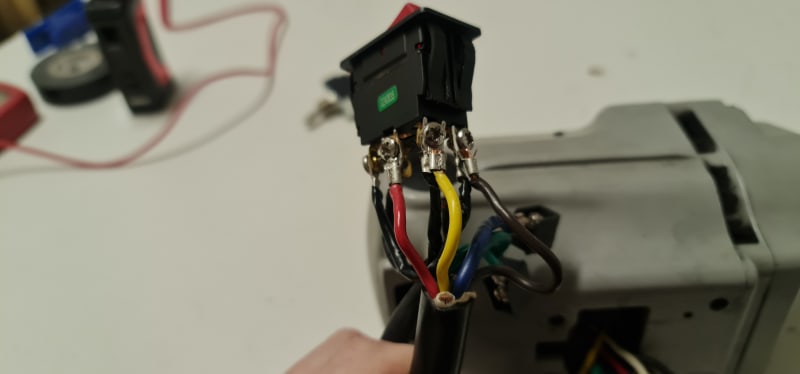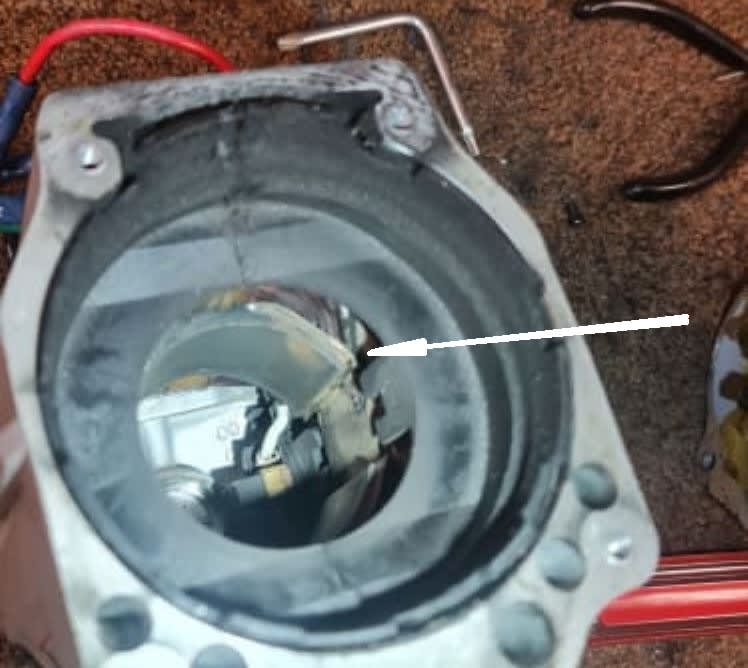bradgirman
Electrical
- Aug 29, 2021
- 12
I have a motor for a stair climbing dolly I need for heavy equipment, the wiring needed to be replaced and I'm failing at wiring this properly to the rocker switch. The switch has 6 terminals, the corners are cross connected.
